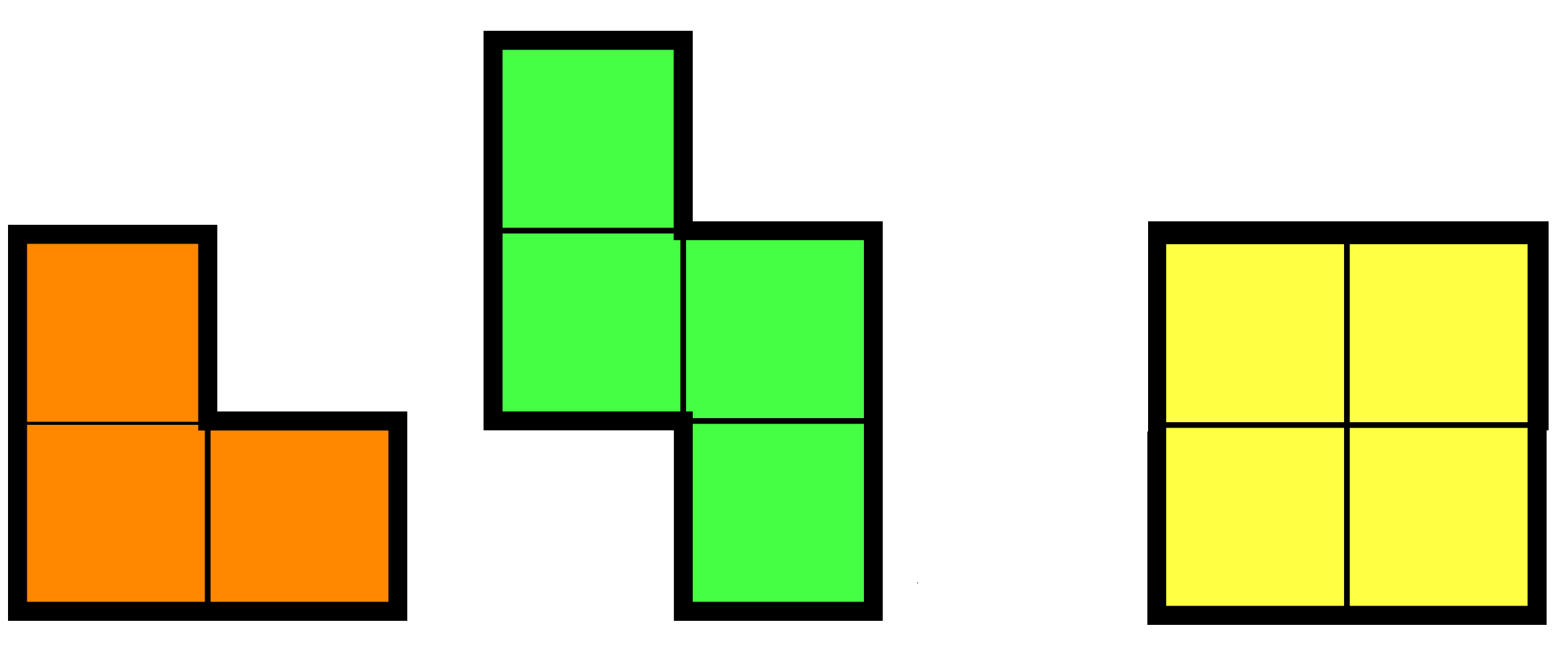Problems
A \((2n - 1) \times (2n - 1)\) board is tiled with pieces of the following possible types:

Prove that at least \(4n-1\) of the first type have been used.
In an \(n \times n\) board the squares are painted black or white in some way. Three of the squares in the corners are white and one is black. Show that there is a \(2\times 2\) square with an odd number of white unit squares.
On an \(8\times 8\) board there is a lamp in every square. Initially every lamp is turned off. In a move we choose a lamp and a direction (it can be the vertical direction or the horizontal one) and change the state of that lamp and all its neighbours in that direction. After a certain number of moves, there is exactly one lamp turned on. Find all the possible positions of that lamp.
In an \(5\times 5\) board one corner was removed. Is it possible to cover the remaining board with linear trominos (\(1\times 3\) blocks)?
Convert the binary number \(10011\) into decimal, and convert the decimal number \(28\) into binary. Multiply by \(2\) as binary numbers both \(10011\) and the result of conversion of \(28\) into binary numbers.
The ternary numeral system has only \(3\) digits: \(0,\) \(1\) and \(2\). Therefore the number \(3\) is written in ternary as \(10\). Write down the numbers \(23\) and \(156\) in ternary and add them as ternary.
Write down the first fifteen numbers in binary system.
Given a natural number \(n\) you are allowed to perform two operations: "double up", namely get \(2n\) from \(n\), and "increase by \(1\)", i.e. to get \(n+1\) from \(n\). Find the smallest amount of operations one needs to perform to get the number \(n\) from \(1\).
Alice the fox and Basilio the cat have grown \(20\) counterfeit bills on a money tree and now write seven-digit numbers on them. Each bill has \(7\) empty cells for numbers. Basilio calls out one digit "1" or "2" (he doesn’t know the others), and Alice writes the number into any empty cell of any bill and shows the result to Basilio. When all the cells are filled, Basilio takes as many bills with different numbers as possible (out of several with the same number, he takes only one), and the rest is taken by Alice. What is the largest number of bills Basilio can get, regardless of Alice’s actions?
The king decided to reward a group of \(n\) wise men. They will be placed in a row
one after the other (so that everyone is looking in the same direction),
and each is going to wear a black or a white hat. Everyone will see the
hats of everyone in front, but not those behind them. The wise men will
take turns (from the last to the first) to name the color (white or
black) and the natural number of their choice.
At the end, the number of sages who have named the color of their hat
correctly is counted: that is exactly how many days the whole group will
be paid a salary raise. The wise men were allowed to agree in advance on
how to respond. At the same time, the wise men know that exactly \(k\) of them are insane (they do not know
who exactly). Any insane man names the color white or black, regardless
of the agreement. What is the maximum number of days with a pay
supplement that the wise men can guarantee to a group, regardless of the
location of the insane in the queue?